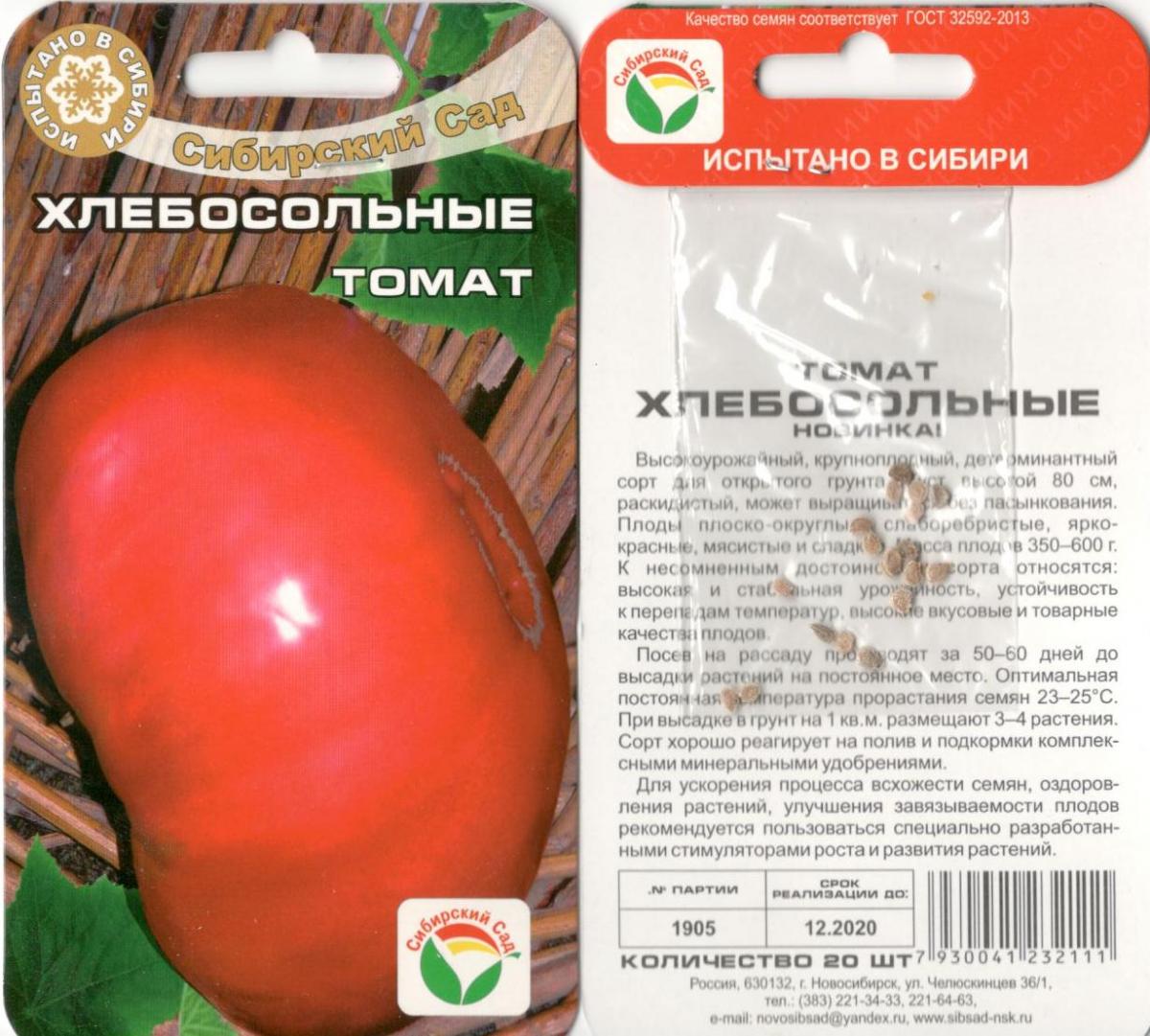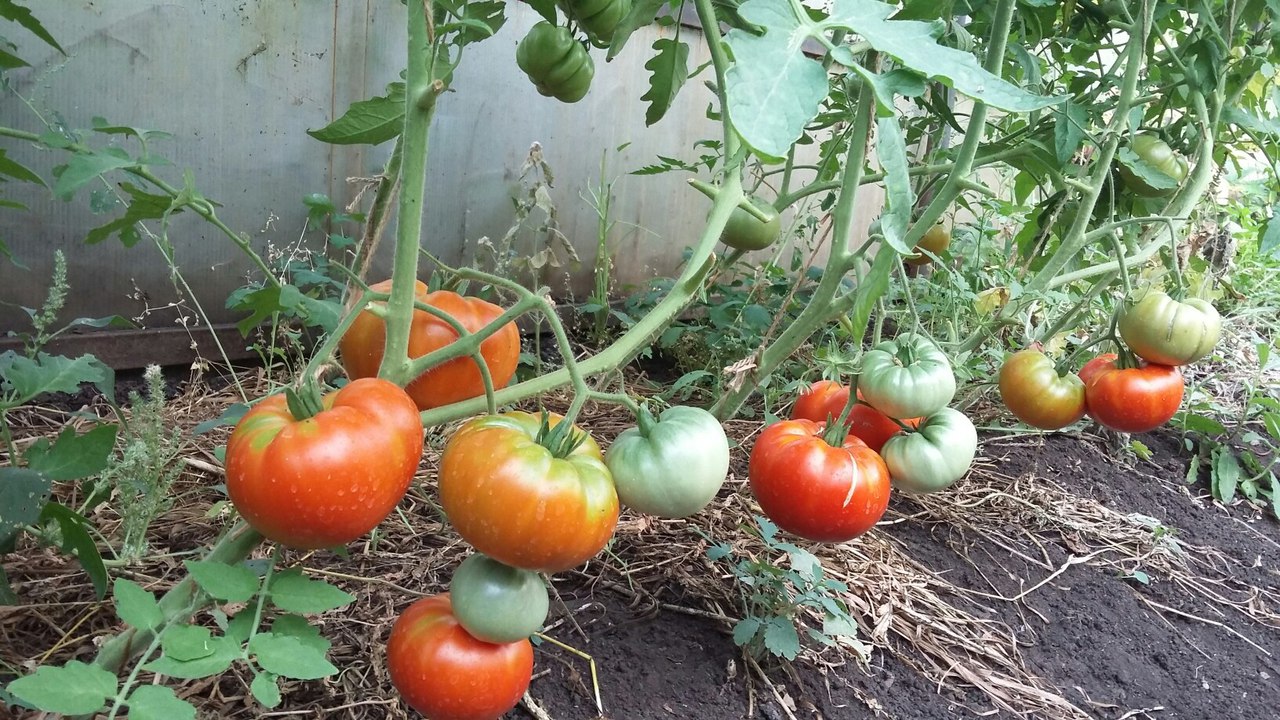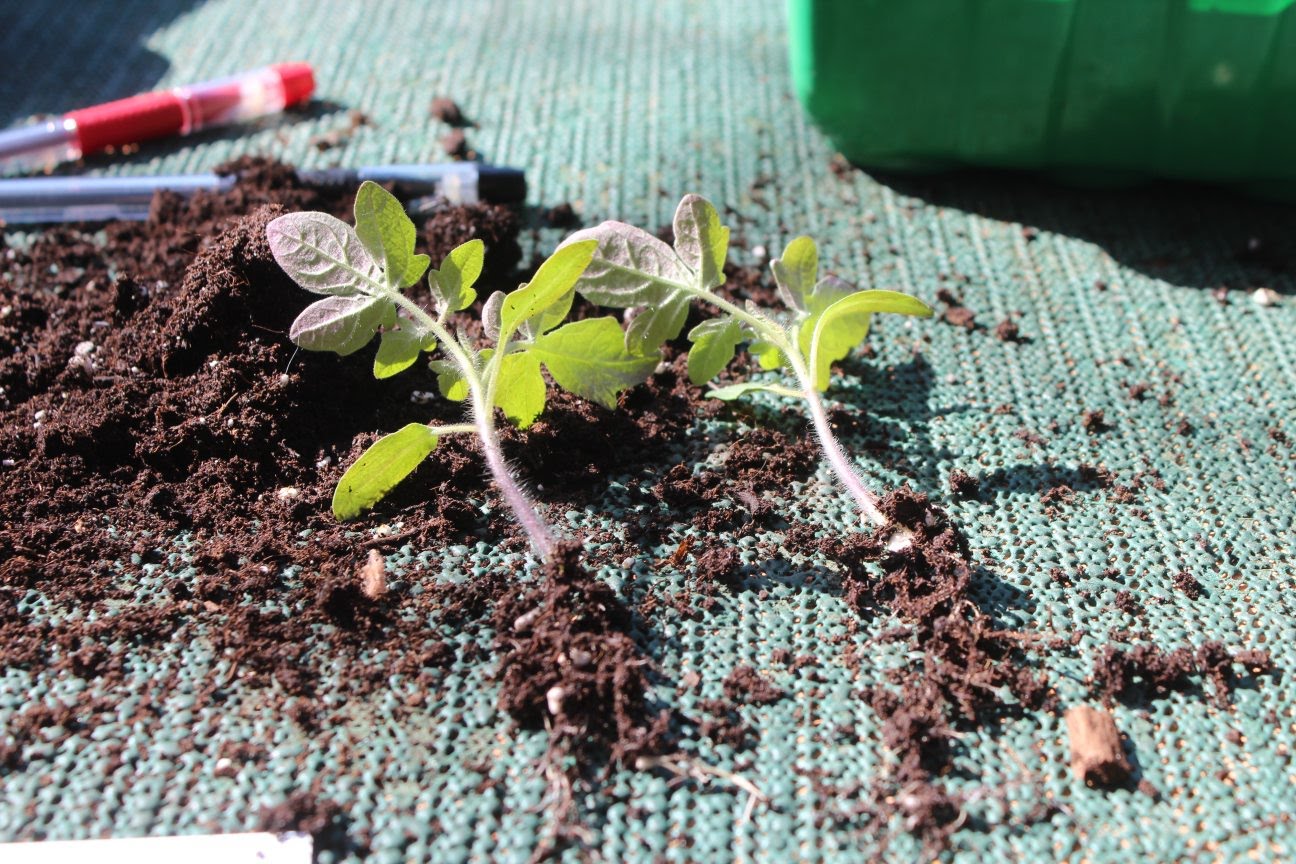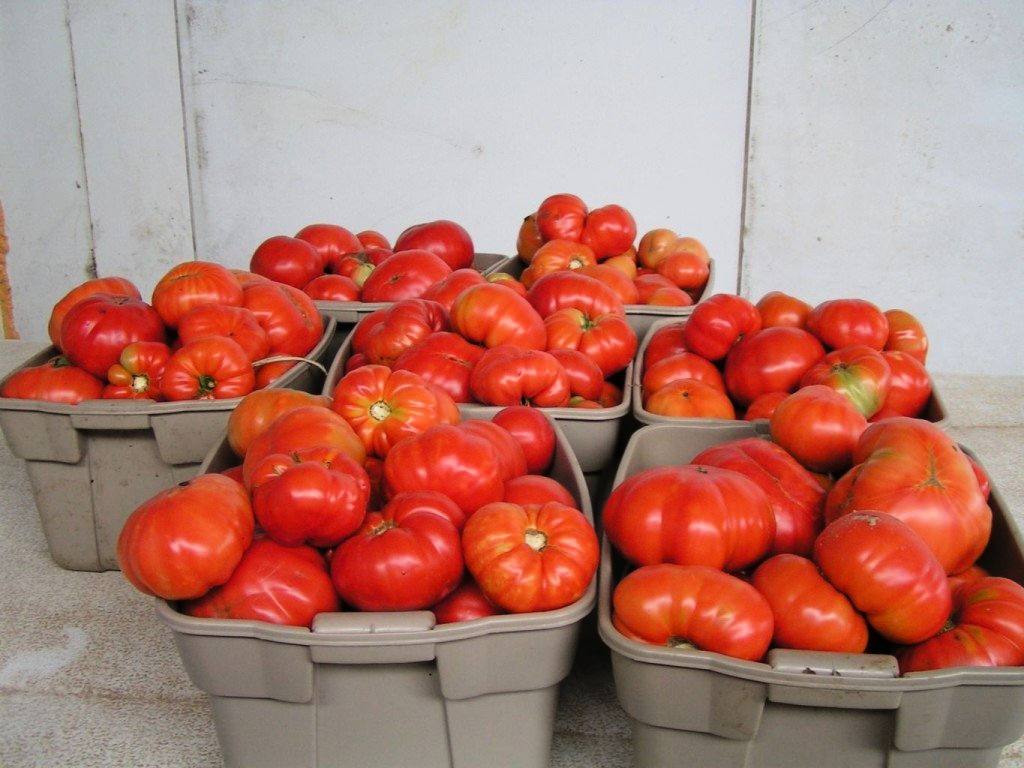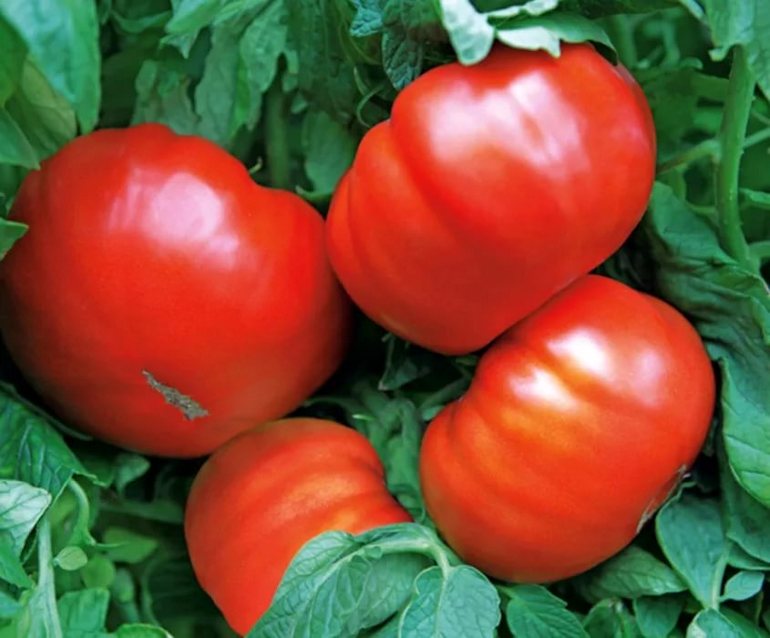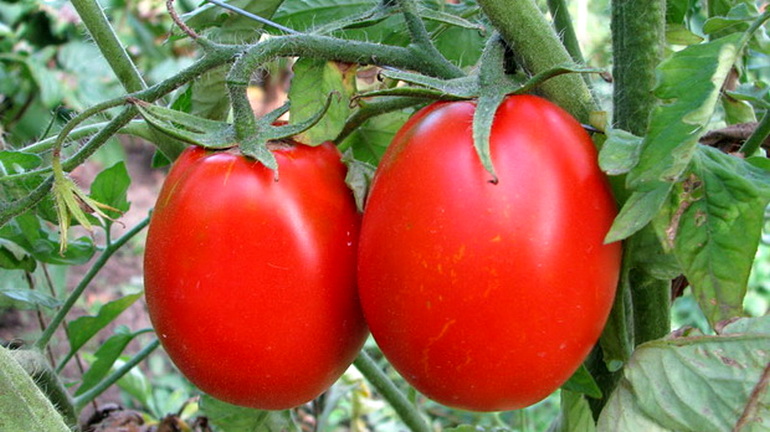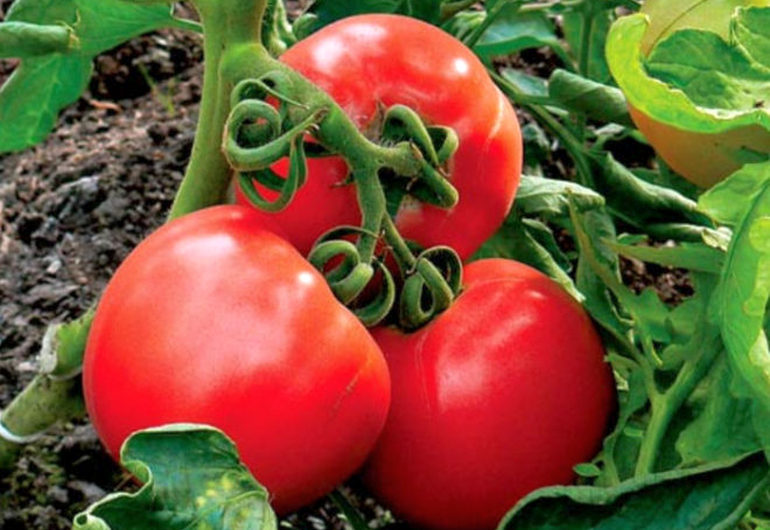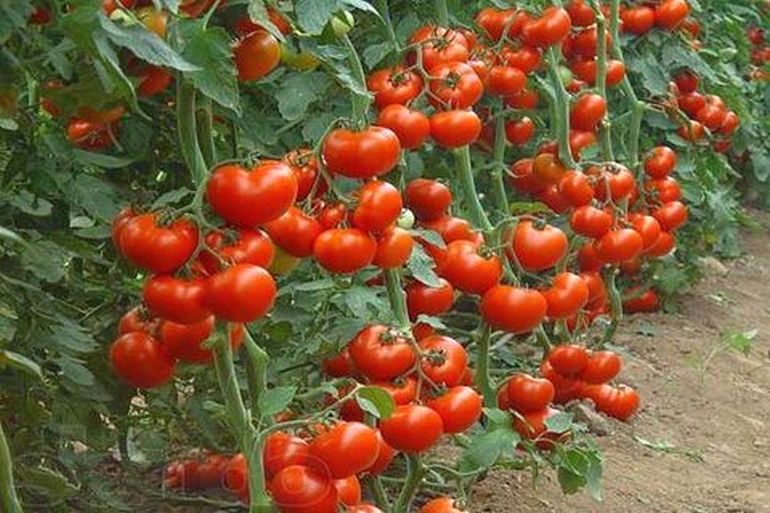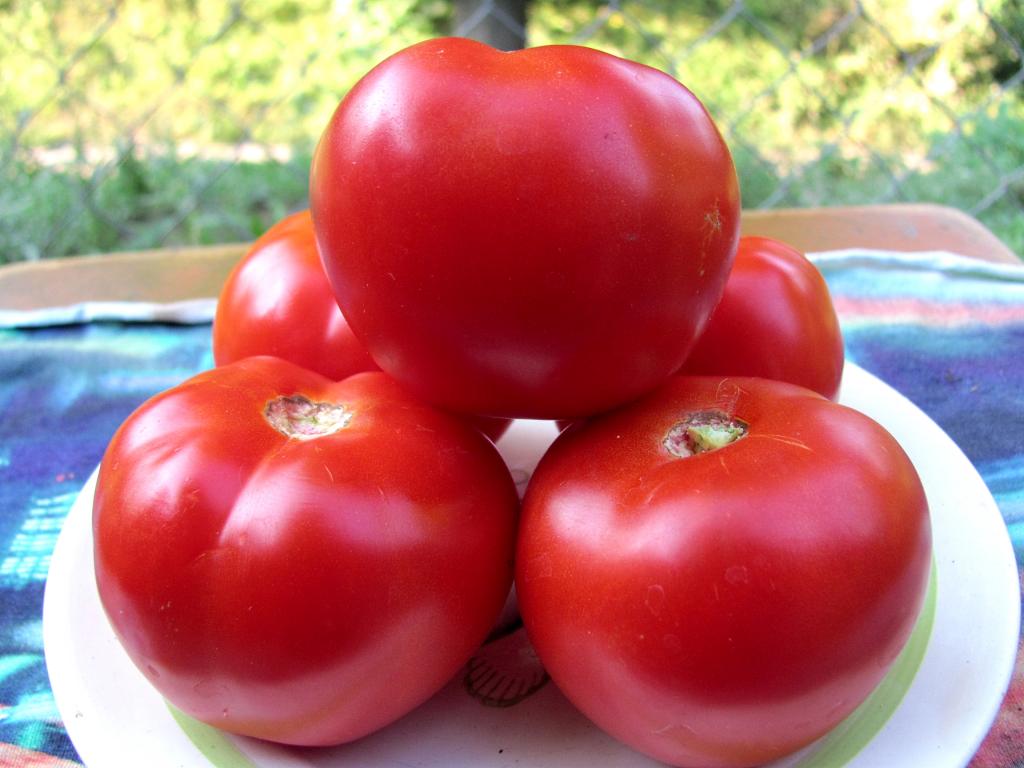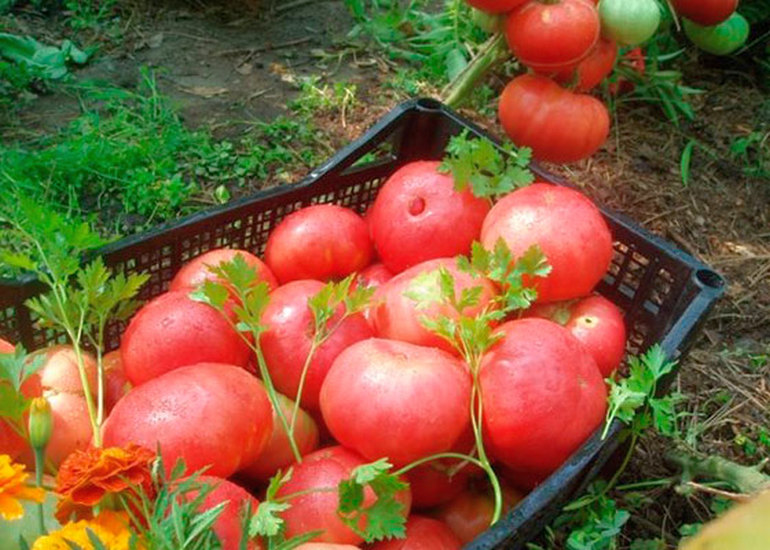Content:
The Khlebosolny tomato is a variety of Russian selection, bred in Novosibirsk by the Siberian Garden agricultural company. In 2006 he was included in the State Register of Breeding Achievements of Russia. The tomato was bred taking into account the climatic conditions of Siberia, therefore, it is simple and unpretentious to care for. A medium-early ripening variety with very large fruits that can feed the whole family.
Variety characteristics
Ripening period - mid-season, 115-120 days from germination.
Fruit type: tomatoes have a red-pink color, round-flat, smooth with slight ribbing.
Fruit weight: large-fruited variety, weighing 350-600 g, the largest fruit can reach a weight of 1 kg.
Fruit flavor: multi-chamber fruits with fleshy sweet flesh, excellent tomato flavor.
Growth type: determinant, the plant, reaching 60-80 cm, stops its growth, ending the stem with a flower brush. Low growing tomatoes are suitable for outdoor cultivation. The determinant type is easy to care for, can be grown without forming a bush and pinching. Sprawling bush with high fruit set.
Productivity - up to 5 kg per plant. The output of marketable fruits - 98%, ripe - 83%.
Appointment - salad.
In the characteristics and description of the tomato variety Khlebosolny, such advantages of the culture as the endurance of various climatic conditions, lack of illumination, and common diseases are also indicated.
Agricultural technology varieties
Low-growing varieties ripen faster, so seeds can be planted for seedlings in the second half of March or 50-55 days before planting in the ground. The variety is characterized by the fact that it can be grown from its own seeds harvested from the last season.
The soil for planting should be light, loose and nutritious. For the composition of the soil mixture, take in equal parts humus and garden soil. A glass of ash is added to a bucket of soil, which will give the substrate the necessary trace elements. The soil is well spilled with water and compacted a little. The tanks must have a drainage hole for drainage.
The seeds must be prepared for planting by disinfecting them for 20 minutes. in a saturated solution of manganese, then rinse with water. After disinfection, the seeds can be treated with growth stimulants. To awaken the seeds to the beginning of germination, before planting, they are germinated by folding them into damp gauze and covered with a bag. A few days later, when sprouts appear, the seeds are planted in containers with soil: they are laid out on the soil and covered with 1 cm of soil on top. Cover the top with foil or glass. At this time, the seedlings do not need illumination. They put the seedlings in a warm place, but not on batteries.
When the loops begin to appear, it is important to immediately open the seedlings and expose them to the light. The seedling's cotyledonous knee should straighten under the light, otherwise the stem can stretch out in a dark place in a few hours. The elongated stem changes its internal structure and becomes weak, does not take root well, the leaves turn pale.
At the same time, as the seedlings are exposed to a lighted place, the air temperature should be lowered to + 16 ° C during the day and + 12 ° C at night. With a decrease in temperature, the growth of the aerial part slows down for some time, and the development of the root system begins, which is important for the further successful development of the plant.After 5 days, the temperature is set for subsequent cultivation from + 22 ° C.
Diving of seedlings, their transplantation into separate containers occurs after the appearance of several true leaves.
When transplanted into open ground in order to collect fruits earlier, the seedlings are grown in such a way that the first flower brush appears in the pot.
A mandatory procedure a few weeks before transplanting to a permanent place is to harden the seedlings. Hardening begins with lowering the air temperature by 2-3 hours. And a few days before transplanting into open ground, the tomatoes are finally placed in a cooler place, for example, on a balcony. Hardening gives faster and better survival of tomato in new conditions, increases the rate of fruit ripening for several weeks. An unhardened plant will take a lot of time and effort to get out of the stress state and start growing again.
These beds are well suited for heat-loving plants. The ridges are made like a puff pastry, where various organic plant residues are laid between the layers of the earth. Organic matter inside the soil decomposes and generates additional heat, warming up the roots. So plants better tolerate unfavorable weather conditions, temperature drops. Organics also provide nutrients, which increase the maturity and productivity of tomatoes.
Before planting, the soil is loosened, the hole is watered abundantly, the seedling can not be buried, but planted flush with the ground, which is more suitable for the biological characteristics of the stem, and after 10 days, add the plant without touching the leaves.
In the description of the tomato, the Bush bush is characterized as compact, but spreading, so there are 4-5 plants per 1 m². With a large weight of fruit without a garter, the stalk can be injured, bending or breaking off. In this case, the tomato will not receive the necessary nutrition, so a garter is definitely required. You can use fabric cut into wide strips as a garter material, or purchase special garter kits. In any case, the material should not injure the stem and limit its growth. There should be free space between the stem and the support.
The cultivation of determinant varieties is simplified by the fact that the bushes do not need to be formed, but shoots emerging from the ground should be removed, in addition to the main stem. Also in the phase of milk maturity, and when the tomato begins to acquire color, the leaves below the fruit cluster are removed, several pieces per week. These leaves no longer have a nutritional function and are not needed by the plant.
When watering, you should use the rule that it is better not to top up than overflow. Tomato needs abundant, but leveled watering. Even when it is noticed that the leaves have wilted a little, you can water the next day. Watering should be done in the first half of the day, from 10 am to 2 pm, at which time the moisture will properly penetrate into the desired parts of the plant.
Mulching the soil with organic raw materials is important for growing tomatoes. This method protects the roots from drying out, overheating and weeds. Also, the plant is additionally protected from contact of the green part with the ground, which prevents diseases. A favorable mulch environment accelerates the maturation and yield of tomatoes.
Advantages and disadvantages of the variety
Baked salted tomatoes, bred taking into account the Siberian climate, are suitable for various growing conditions in the open field. The variety is distinguished by high biological and economic early ripening with large juicy fruits. The tomato is resistant to various diseases, easy to care for, suitable for novice gardeners.
Some of the features of the variety include the fact that large tomatoes are not used for canning in whole or cut, because their fleshy pulp is more suitable for salads and fresh consumption. Also, determinant varieties are limited in their growth, so they only give a certain amount of harvest per season and for only a few weeks.
